The Equine Ribcage: Anatomy, Biomechanics, and Connections
Share this post:

When we contemplate the anatomy of ribs, our minds typically conjure images of their role in protecting vital organs and facilitating respiration. However, unlike humans, horses rely on their ribs for an additional function – bearing the external pressures encountered during various activities, such as riding under saddle or during training sessions like lunging with equipment.
Get the tools and skills you need from Holistic Horseworks clinics and home study courses so you can start changing the dynamics of movement of the ribs which will positively affect the entire body from head to tail!
Signs Your Horse is Experiencing Rib Discomfort
If your horse exhibits any of the following behaviors, it may indicate restricted motion and discomfort affecting one or multiple ribs:
- Inability to take a deep breath in
- Unable to get correct lead changes
- Heavy on the front end in movements
- Lack of ability to bend the entire body in lateral motions
- Behavior issues when girthing up
- Stomach ulcers or GI tract issues
- Muscle atrophy or increased tension of intercostal and spinal muscles
- Soreness of the SI joint
- Belly breathing
- Spinal misalignment
Let’s delve into a fundamental understanding of equine ribs – their functions, locations, and movements.
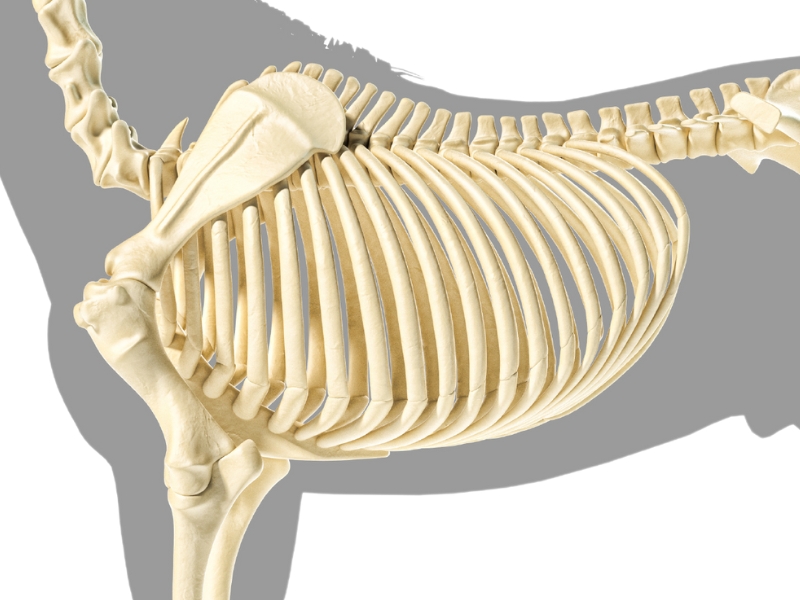
Rib Function, Mobility, and Mechanics
Functionally, ribs serve to safeguard the thorax and abdomen, ensuring the integrity of the delicate organs housed within. Additionally, they play asupporting role in breathing which is essential for oxygenating the blood and maintaining proper circulation throughout the horse’s body.
A horse possesses an impressive array of 18 pairs of ribs, totaling 36 to form its rib cage. The first eight ribs attach directly to the sternum, offering limited mobility due to their fixed connection. This region encapsulates the thoracic cavity, housing vital organs like the heart and lungs. It’s noteworthy to consider the significance of these ribs in supporting the weight and movements of the horse, especially when interacting with equipment such as the cinch.
Moving further down the rib cage, ribs 9-18, often termed “false” ribs, attach to costal cartilage, granting them increased flexibility. This portion encloses the abdominal cavity, where organs like the liver, stomach, and intestines are located. If these ribs lack motion, it may indicate underlying issues related to the mobility and motility of the organs they protect, underscoring the interconnectedness of rib function with internal dynamics.
Each rib, excluding the 18th, connects to two vertebrae at its head, exerting direct influence on spinal dynamics such as flexion, extension, and lateral and medial movements. External muscles, including the longissimus and abdominals, attach to the ribs, while internal connections involve essential structures like the diaphragm and intercostals, crucial for respiratory function.
During inhalation, the ribs undergo dorsal and lateral movements, resulting in extension of the thoracic spine. Conversely, exhalation entails ventral, caudal, and medial motions in the ribs, inducing spinal flexion.
As our horse inhales while bending to one side, the ribs on the same side as the bend should undergo movements of medial, ventral, and caudal directions. Simultaneously, the ribs on the opposite side should engage in motions of lateral, dorsal, and cranial directions. This synchronized movement of the ribs facilitates free and proper side bending.
Proper rib mobility is paramount for achieving balanced inspiration and expiration, facilitating optimal flexion and extension of the thoracic spine. As riders, understanding and fostering this mobility is crucial for attaining collection and facilitating smooth side-bending maneuvers. As riders, understanding and promoting this mobility is essential for ensuring the well-being and performance of our equine partners.
Ensure your horse maintains fluid movement well into its 30s, whether at work or play! Embark on this journey with us, starting with Level 1: Equine Musculoskeletal Unwinding, a comprehensive exploration of musculoskeletal unwinding and energy work.
Rib Release Stretches and Techniques
Level 1: Equine Musculoskeletal Unwinding
Learn how to keep your horse happy, healthy, and rideable through their 30’s while saving thousands on vet bills! The reason why your horse is having so many problems is that most people you go to for advice— including vets, trainers, and many equine professionals— are only treating the symptoms, NOT the root of the issues. And that’s the way it’s been for years and years. But if “the good ole’ ways” just aren’t working anymore, now is the time to start looking at things in a whole new way.
Hands-On Horse Body Therapy Clinics
We teach in-person event all around the world including the US, Canada, UK, Europe, Australia, New Zealand, and South Africa! Visit our clinic page to see the full schedule. Don’t see an event near you? Apply to be a host! In exchange, you’ll receive FREE admission to each event you host which adds up to over $2,000 in savings! And you’ll get free bodywork for your horses values at $300 per horse.
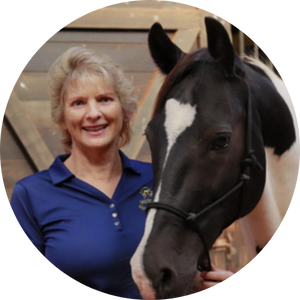
About the Author
April Love
Founder of Holistic Horseworks & Horse Healers Academy
Owner of Holistic Horseworks LLC, April Love empowers horse lovers to take healing into their own hands in order to keep their horses healthy, happy, and rideable through their 30’s while saving thousands of dollars on vet care. She has created a unique IICT (International Institute for Complementary Therapists) approved methodology that she teaches through in-person, hands-on clinics as well as virtual home study courses. April has also trained and vetted many instructors who share this practice worldwide.
As a gift to you, please enjoy a FREE copy of “Horse 101: Everything You Wish You Knew Before You Bought Your First Horse” www.horseacademy101.com
More Posts
Foals Need Bodywork, Too!
Early bodywork can profoundly impact your foal's development, ensuring they grow into healthy, balanced, and well-adjusted adults. Let's talk about essential timing and techniques of early bodywork, helping you recognize signs of misalignment and understand the benefits of starting bodywork from a young age.
Summer Heat and the Best Electrolytes for Horses
As the summer heat sets in, it's important to consider your horse's electrolyte needs. Proper electrolyte supplementation can help keep your horse happy, healthy, and performing their best even in the hottest weather. Discover the importance of electrolytes and get our top recommendation for the best electrolytes, along with
Help! My Horses’ Eye is Swollen, Watery, or Goopy.
Are you seeing swelling above or below one of your horse’s eyes? Is the inside corner of the eye inflamed and pink? Is the eye constantly weeping, watery, or goopy? These are all symptoms of equine uveitis (inflammation of the eye). You can learn how to prevent or help
My Horse Has Kissing Spine! What Do I Do?
Wonder if your horse may have kissing spine? Or have you just received a “kissing spine” diagnosis from your vet? Don’t give up hope! Learn to improve this issue yourself while saving thousands of dollars on additional veterinary treatment options and medications. Let’s explore what causes kissing spine, its
Summer Time Tune-Up for Your Horse
As the days grow longer and the temperatures rise, it’s time to give our equine companions the extra care they need to thrive during the summer months. From hoof health to hydration and performance support, here’s a quick guide to tuning up your horse for the season ahead.
The Equine Ribcage: Anatomy, Biomechanics, and Connections
Get more power + stamina! The ribcage has a vital role in your horse's overall function. Its extensive connections to breathing, intestinal health, the psoas muscle, and spinal health significantly enhance your horse's performance capabilities.
Biomechanics of the First Rib
Ready to explore some insightful and helpful biomechanics info about your horse’s shoulder, first rib, front limbs, and hooves? Mastering this knowledge can keep your horse happy and moving freely well into their 30s! How do you know if your horse dealing with troublesome issues in these areas? Read
Tips to Tune-Up Your Horse in Spring
As the vibrant colors of spring emerge and the weather warms, horse owners are gearing up to provide their equine companions with the care they need for the season ahead. Here are some essential spring tune-up tips to keep your horse happy, healthy, and ready for action.
Maintaining Healthy Weight in Older Horses with Vegan Fat Sources
In this episode, our founder, April Love, shares valuable information on maintaining the well-being of older horses, focusing on a simple recipe for a vegan fat source. The discussion delves into practical tips for horses with missing teeth, difficulty gaining weight, and the importance of identifying and addressing insulin
The Hyoid and First Rib Connection
Many people talk about the hyoid as the cause of an issue. The equine industry has established that the hyoid is connected not only directly to the tongue, forelimb, and poll but also indirectly to the hindquarter. However, looking at this from a holistic perspective, it is also important

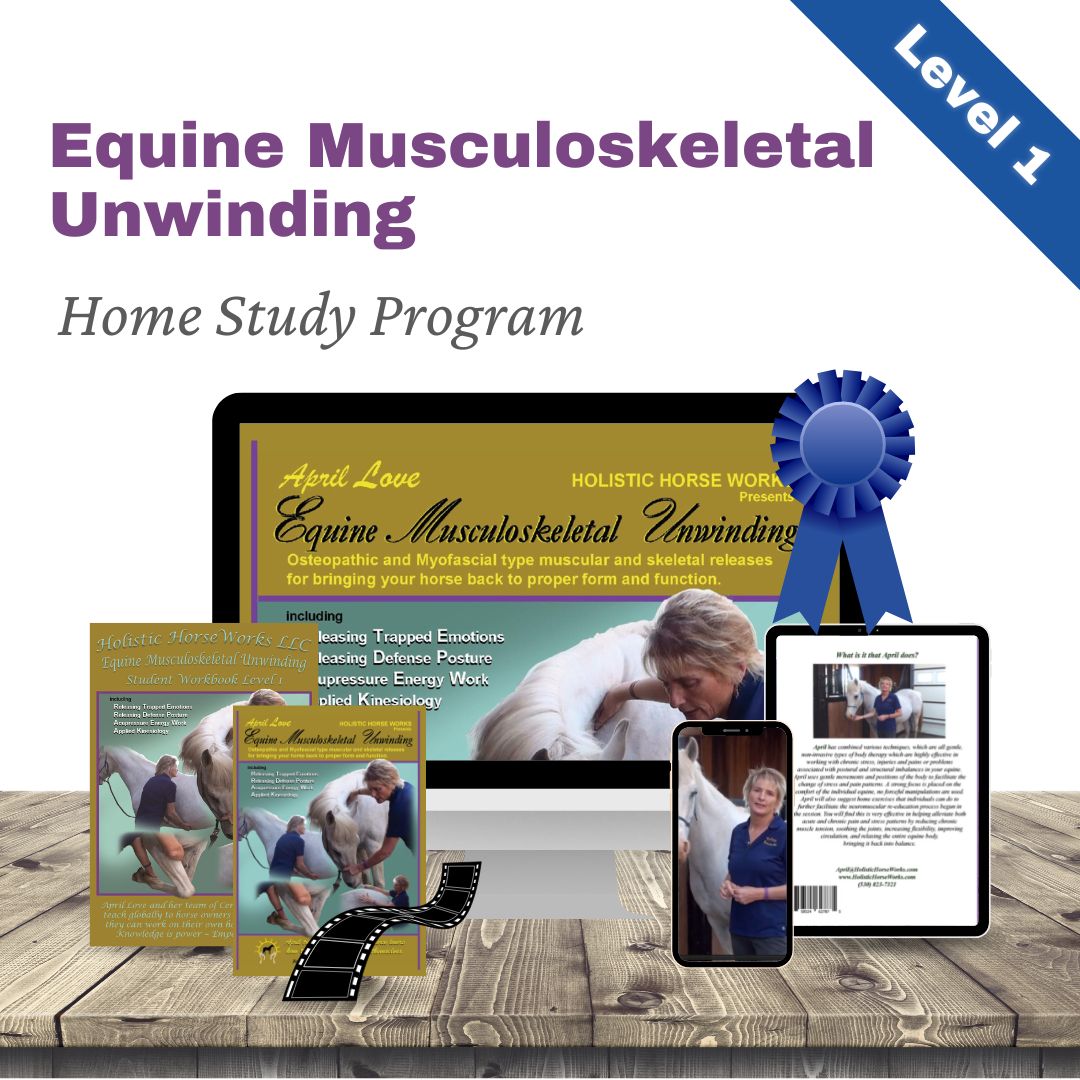


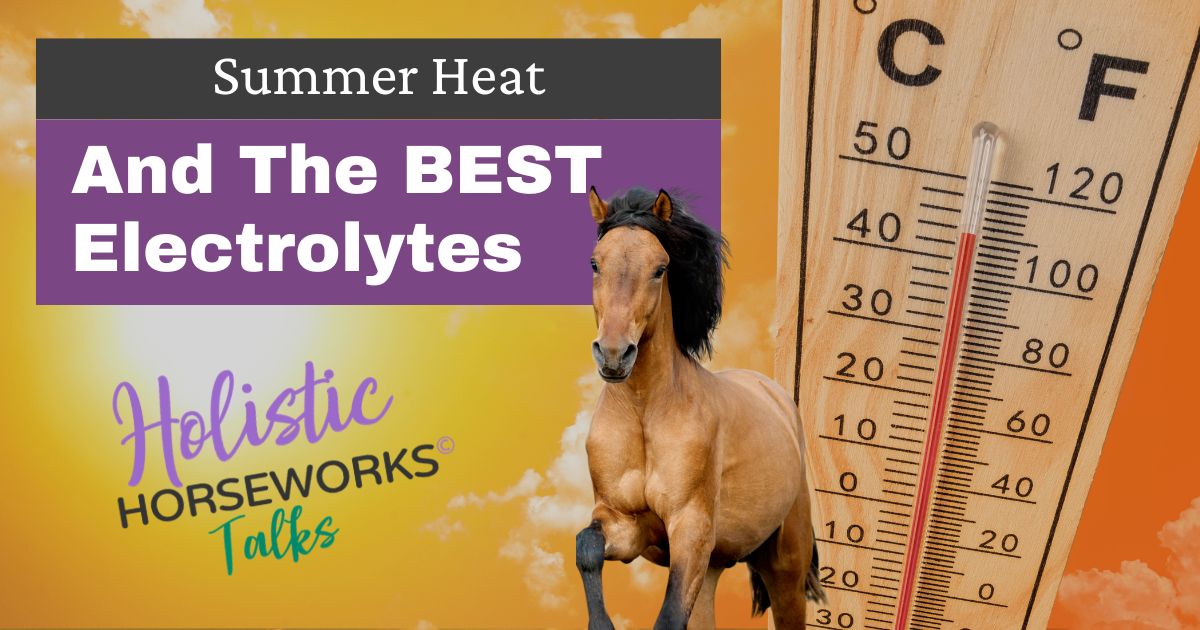
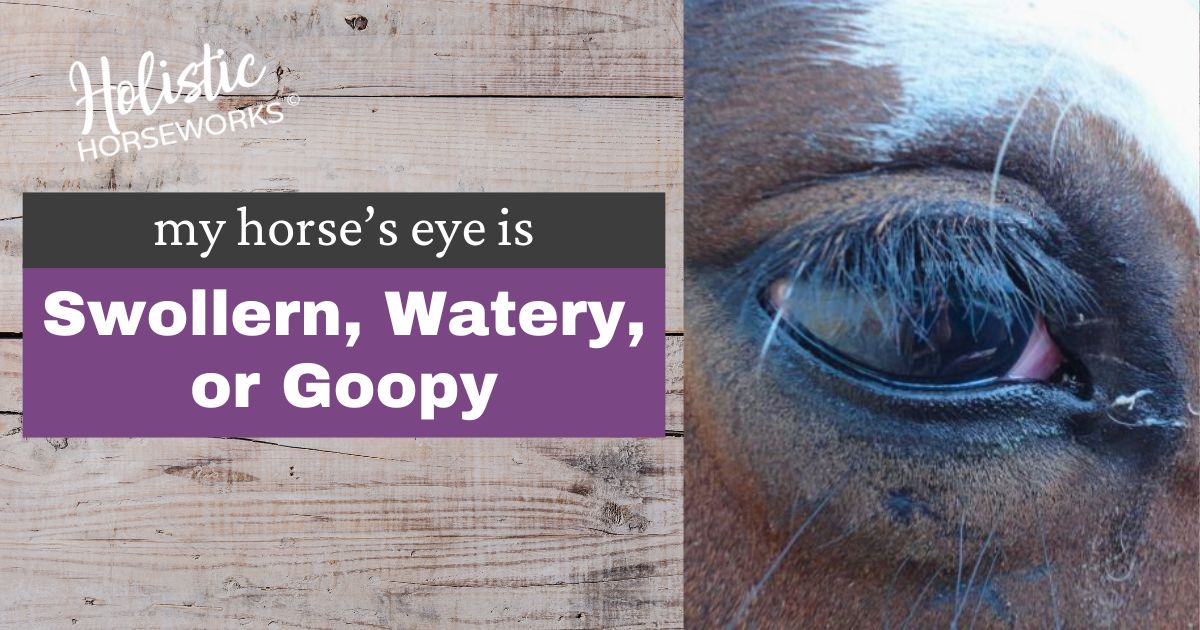
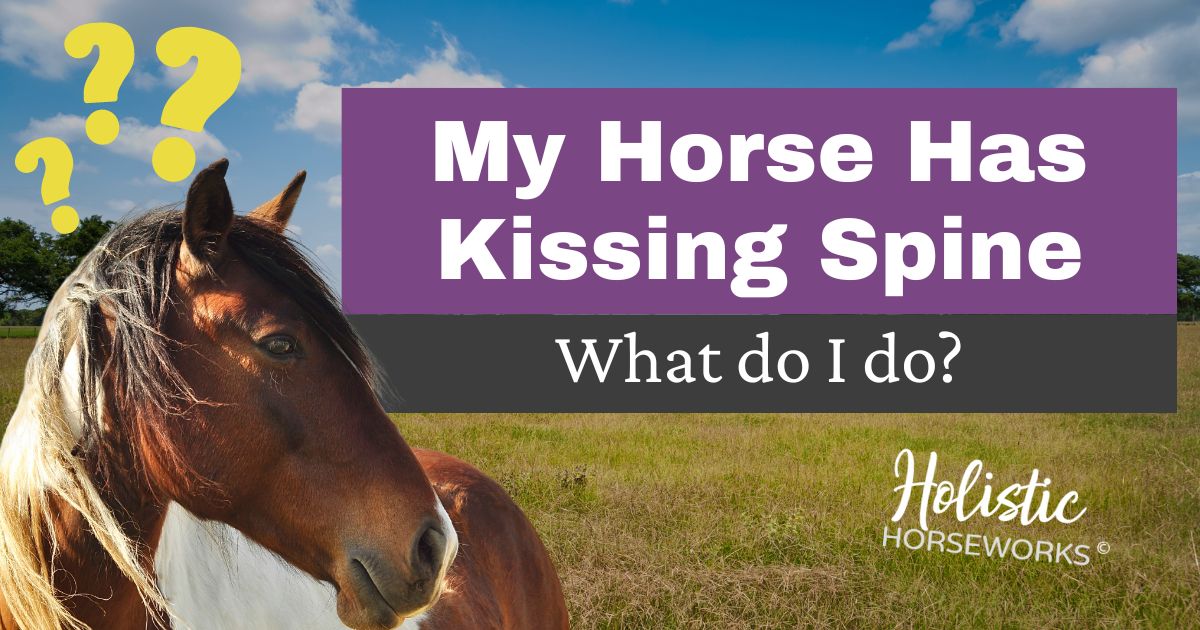
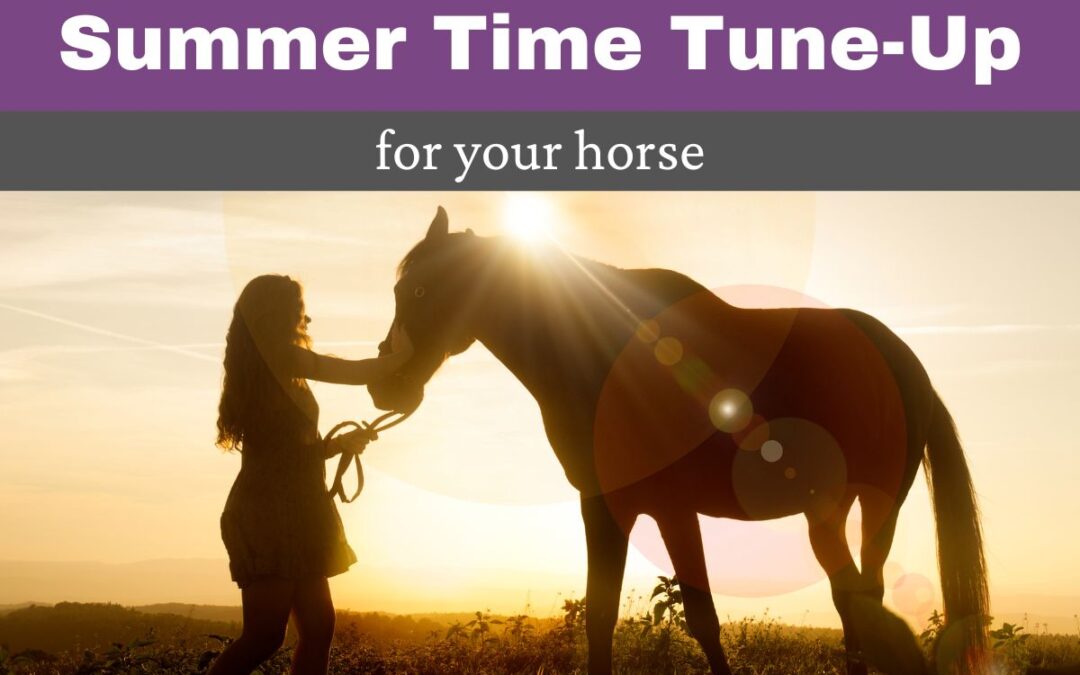
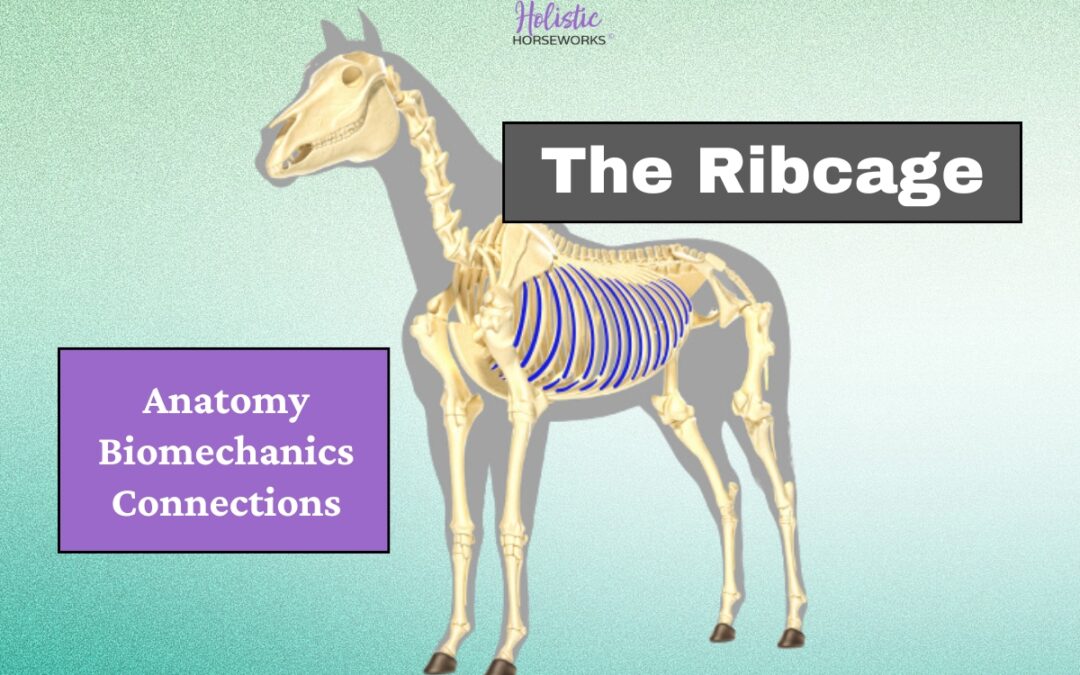
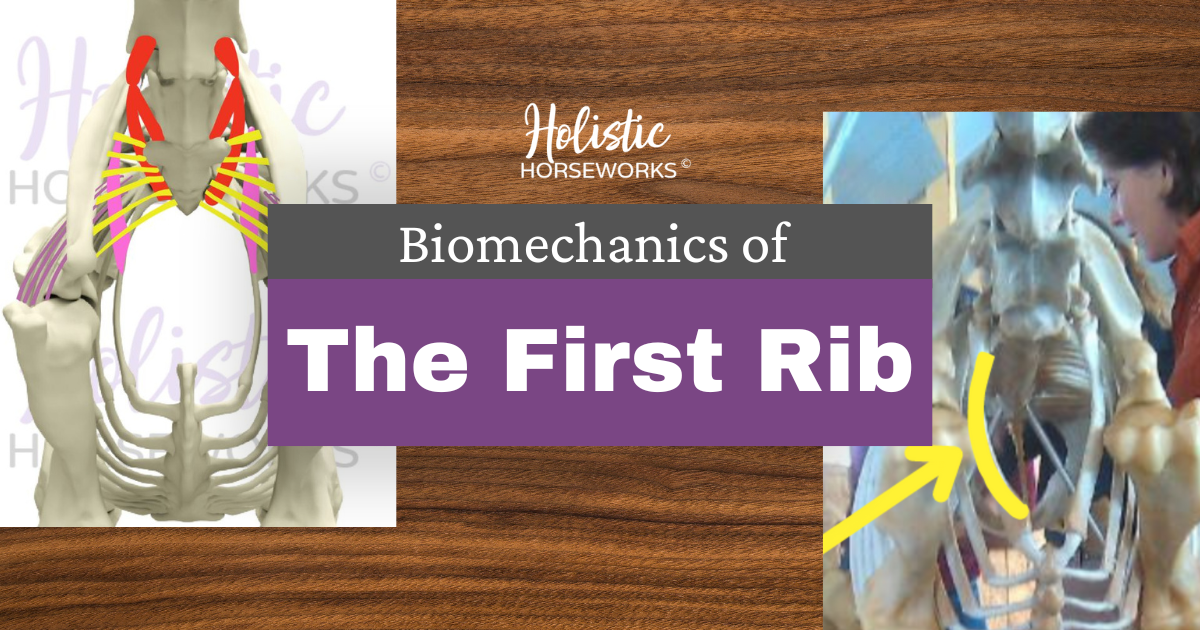
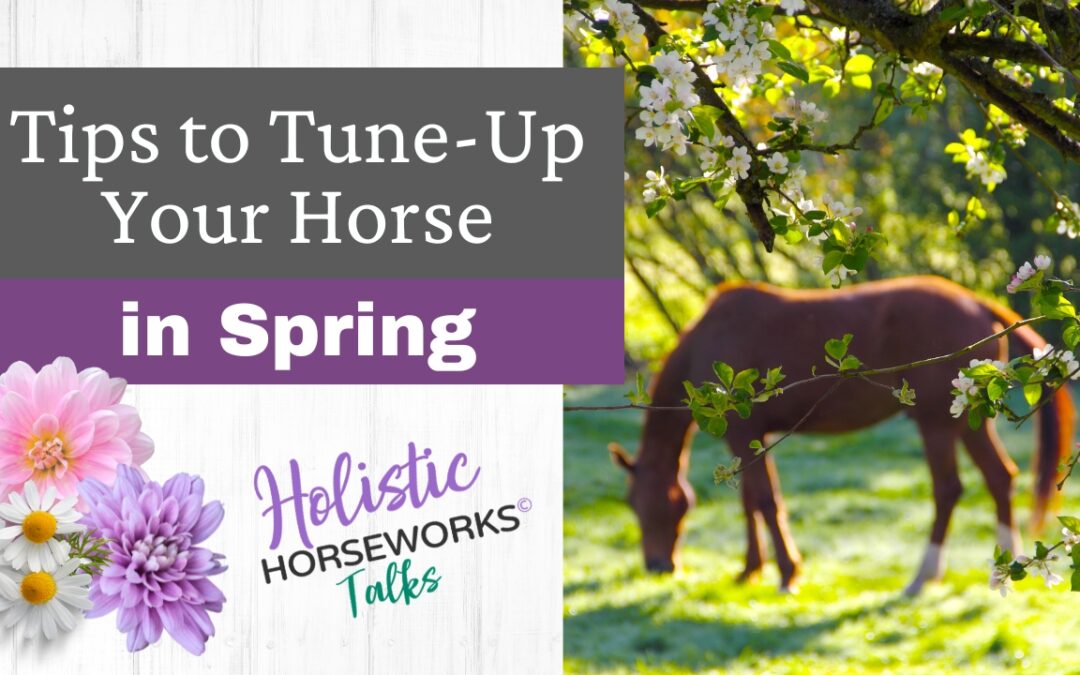
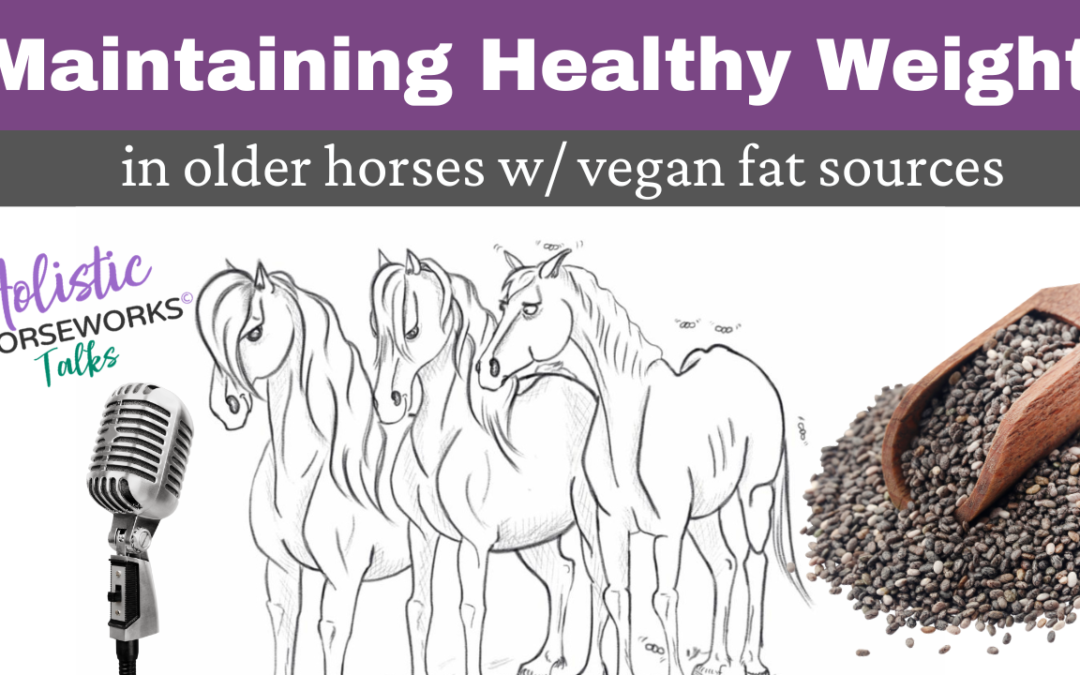
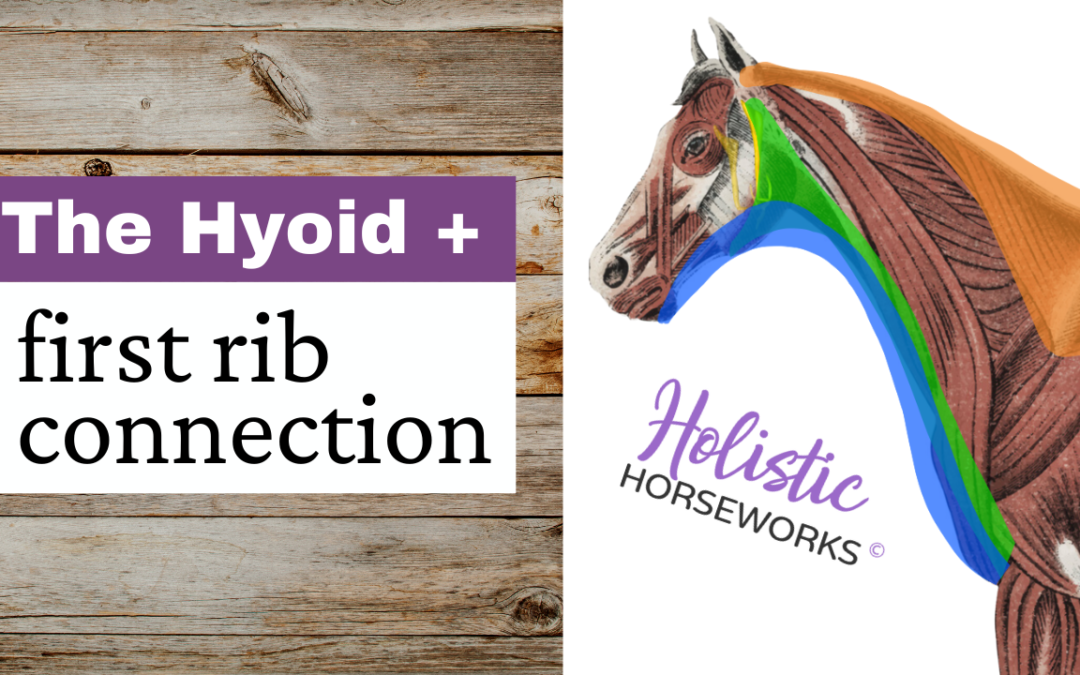
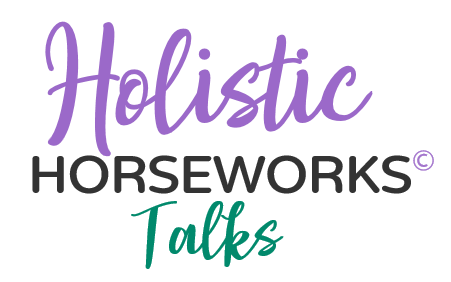
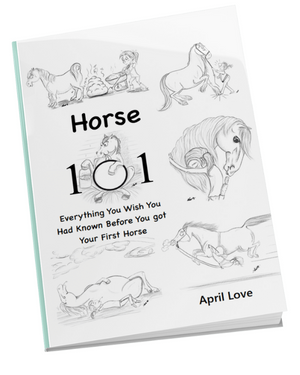
![Complete Level 1 & Level 2 Home Study + Private Training Package [NO DVD]](https://holistichorseworks.com/wp-content/uploads/2022/08/Level-1-and-Level-2-complete-home-study-and-training-package-400x400.jpg)
![Level 1 "Equine Musculoskeletal Unwinding" Home Study -Watch Instantly [NO DVD]](https://holistichorseworks.com/wp-content/uploads/2022/08/Level-1-Home-Study-400x400.jpg)
![Level 2 “CranioSacral Unwinding & Advanced Applied Kinesiology” Home Study - Watch Instantly [NO DVD]](https://holistichorseworks.com/wp-content/uploads/2022/08/Level-2-Home-Study-400x400.jpg)
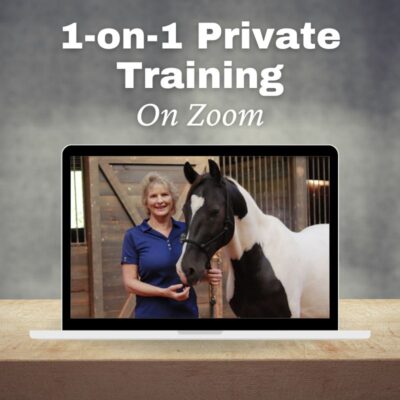
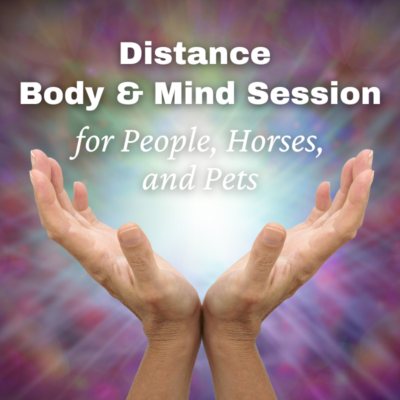
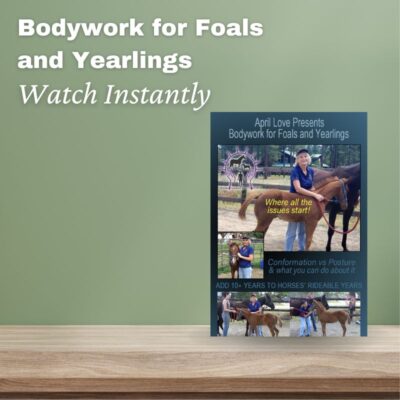
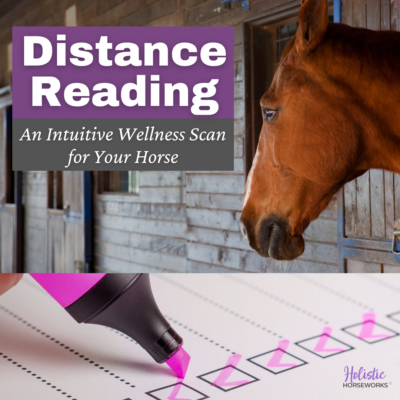
![Equine CranioSacral Energy Work -Watch Instantly [English and French]](https://holistichorseworks.com/wp-content/uploads/2022/09/equine-cranial-sacral-energy-work-watch-instantly-400x400.jpg)